| 08:30 to 09:00 |
Registration
|
| 09:00 to 09:10 |
President's Introduction
|
| 09:09 |
SESSION ONE - Moderator: Philip Friel, ADI President Elect
|
| 09:10 to 09:30 |
Building and marketing a referral implant practice The presentation is a mixture of slides, film and animation on how to build and market a dental implant practice. It includes tips on how to encourage referrals from colleagues, and how to build an effective website.
The presentation begins by looking at the dental implant market. It poses and answers the question 'Should we market healthcare?'
It looks at recent shifts in marketing, and conforming with GDC regulations.
It deals with the differences between internal and external marketing; creating the right message, presence and tone in advertising; search engine optimisation; encouraging testamonials from patients; and reaching out to potential referring colleagues.
It concludes with top tips (learned from my own experience) for building a referral practice.
Nigel Jones 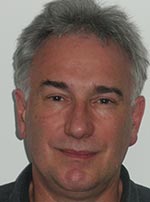 Nigel Jones runs an implant referral practice in Abergavenny, South Wales. He first studied dental implants with Cemal Ucer in 2002, gaining his diploma in implant dentistry from the FGDP in 2008. Nigel Jones runs an implant referral practice in Abergavenny, South Wales. He first studied dental implants with Cemal Ucer in 2002, gaining his diploma in implant dentistry from the FGDP in 2008.
He now teaches on the implant diploma having been a tutor on cohorts 9, 12 and 14. He presents for several implant companies, and will place about 500 implants this year to meet the financial demands of his long-suffering wife and four children.
Qualifications: BDS MJDF DipImpDent RCS |
| 09:30 to 09:50 |
Communication - the path to Dental Enlightenment Patient anger underlines many malpractice claims and frequently results from ineffective communication.
This talk will focus on factors that constitute effective communication, and how developing an understanding of the communication process will enhance the interaction between the clinician and the patient.
It will explore the different modes of communication, touching on body language and tone of voice as underutilised aspects.
It will explore the differences between 'listening and hearing’, and the use of techniques such as parroting and paraphrasing to enhance the communication process and reduce misunderstandings for both the clinician and patient.
I will briefly describe learning styles and what constitutes a ‘good and bad’ communicator.
Finally I will explore how communication is essential in managing patient’s expectations.
Happy patients are the first step to Dental Enlightenment.
Nilesh Shah 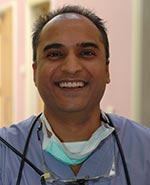 Nilesh Shah has extensive commitment to continuing education with a special interest in Implantology and oral surgery - including visits to the Pankey Institute for Advanced Dental Education, Miami, USA. Has a Masters degree in Implantology from Sheffield University. Nilesh Shah has extensive commitment to continuing education with a special interest in Implantology and oral surgery - including visits to the Pankey Institute for Advanced Dental Education, Miami, USA. Has a Masters degree in Implantology from Sheffield University.
Nilesh is a mentor for Dentsply Implants and is on the ADI mentor list. Has lectured nationally and internationally on consent and dental implants. Provides a referral service for local GDPs requiring MOS services. Has taught on various training programs ranging from MSc to foundation training. Holds a Diploma in Clinical Education from Sheffield Hallam University. Is the principal of Gorse Covert Dental Practice Ltd.
Qualifications: BDS MFGDP MMedSci (Implantology)
|
| 09:50 to 10:10 |
Panel Disccussion
|
| 10:40 to 11:00 |
Tea/Coffee & Exhibition
|
| 11:00 to 11:20 |
New horizons in implantology - screwless and cementless The first part of the paper will cover the salient facts regarding the tapered (1.5') connection of the implant that dispenses with screwed abutments. This results in a biological seal and also avoids the costly and perennial problem of loose or fractured screws as well as the potential of bone saucerisation and peri-implantitis around the neck of the implant and all its associated clinical complications.
The second part of the paper will show: a) The use of an advanced composite that is directly bonded to the titanium abutment in the laboratory to fabricate a whole crown - an integrated abutment crown that is simply tapped into the implant well with a customised jig thus avoiding conventional luting cement of an Implant crown and the potential problem of retained cement and its associated clinical complications that can lead to mucositis and peri-implantitis. b) The use of a new glass fibre reinforced resin substructure that is metal free, extremely strong, light and supports a fixed prosthesis.
Aims: The paper will show that if we can reduce any potential complications in Implant Dentistry, then that is our goal. This in turn reduces costs and less stress on the implantologist.
Learning ObjectivesLearning Objectives: 1) Understand the benefits of the locking taper connection. 2) Understand the benefits of utilising integrated abutment crowns instead of conventionally screwed and cemented implant crowns.
John Stowell 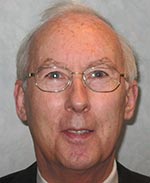 John Stowell qualified in 1966 from both London (RCS) and Durham University. John Stowell qualified in 1966 from both London (RCS) and Durham University.
He held various SHO rotations in Newcastle Dental School and on gaining his Fellowship in Edinburgh in 1969 he held the post of Registrar in Oral & Maxillo-Facial Surgery in the North Manchester Hospital.
Subsequently he set up his own Private Clinic and lectured part time in Oral Surgery at the University of Manchester Dental School. He was the first UK dental surgeon to gain the Associate Fellowship of the American Academy of Implant Dentistry (AAID) by examination in 1992. He became an honoured fellow of the AAID in 2011.
He held the post of Associate Specialist in OMFS at Wigan & Leigh NHS Trust until his retirement from hospital work in 2010. He still maintains his private practice at Woodvale Clinic 2-3 Days a week where he mentored MSc post-graduate students in implantology from the University Dental School of Manchester.
He placed his first implant in 1969 (Downs Blade Implant) and has used many implant systems over the years (and thrown a lot away!). This lecture was presented at the AAID meeting in Washington, USA in 2012 and the AISI meeting in Bologna, Italy in 2013.
Qualifications: LDSRCS (Eng) BDS FDSRCS (Edin) Dental and Oral Surgeon |
| 11:20 to 11:40 |
Good morning Mrs Tissue, how nice to see you………. The scope of this oral presentation will be to follow a case history spanning 19 years, with the specific aim of focusing on the preservation of both and soft tissues after trauma, root fracture, immediate implant placement and immediate implant restoration.
This is a case involving a fit and well male patient, aged 37 at initial presentation, having suffered trauma to the upper anterior region. The sequence of treatment that followed will demonstrate the following:
- Connective tissue grafting to facilitate root burial.
- Maintenance of tissue profile.
- Immediate implant placement, and the critical relevance of both bucco-palatal and mesio-distal implant positioning.
- Immediate implant restoration and the importance of correct emergence profile.
- The contact points and their relevance to papillae.
- Final restoration in a stable environment.
As the title suggests, the goal of delivery of care in the more complex case is to perhaps finish with a statement like: "Good night Mrs Tissue, we trust we shall be seeing you again tomorrow!" thus requiring a multitude of treatment modalities to achieve the desired outcome.
The presentation will, in conclusion, look briefly at the the use of platelet-rich growth factor as one of the predicable ways forward to to facilitate tissue augmentation, and to support the use of this technique in our day to day practices.
Shiraz Gulamali 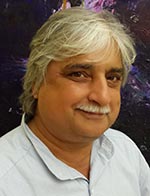 Shiraz Gulamali qualified in 1980 from Guy’s Hospital Dental School. He returned to Guy’s in 1983 to do a Masters in Periodontology. He was Hospital based full time till 1988, after which he entered part time practice. Shiraz Gulamali qualified in 1980 from Guy’s Hospital Dental School. He returned to Guy’s in 1983 to do a Masters in Periodontology. He was Hospital based full time till 1988, after which he entered part time practice.
He has been involved with both undergraduate and postgraduate education, and has presented numerous papers to professional bodies and Societies. He is currently a Mentor on the ADI list, and now has a full time practice exclusive to Periodontics and Implants.
Qualifications: BDS LDSRCS MSc FDSRCPS |
| 11:40 to 12:00 |
Implants - My fallback position: But endo-microsurgery really works The advent of predictable implant technology is a great back-up for the endodontist. Endodontics enjoys equally successful outcomes as implants according to systematic reviews. It is preferable to save a natural tooth when possible. I will discuss the indications for endodontic microsurgery and how it has evolved, and will present some cases (with video) where it may be appropriate to consider an endodontic surgical approach.
As endodontists we need to be able to provide consistent high quality predictable treatments. Gone are the days of the clumsy apicectomy and amalgam retrograde fillings. Like all other aspects of endodontics, endodontic surgery has now evolved to become a technically accurate, highly predictable procedure. It has changed so radically that we no longer call the procedure an apicectomy, rather endodontic microsurgery. We use small volume CBCT scans for planning, microscopes, micromirrors, ultrasonic retrograde tips and MTA to optimise success. It is a shame that it is considered so infrequently in treatment planning as a option as the success rates are remarkable, greater than 90% in long term studies.
Daniel Flynn 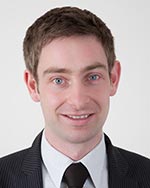 Daniel Flynn, after qualifying from Trinity College Dublin in 2002, spent a year as a House Officer in the Dublin Dental Hospital, concentrating on both restorative dentistry and oral surgery. Daniel Flynn, after qualifying from Trinity College Dublin in 2002, spent a year as a House Officer in the Dublin Dental Hospital, concentrating on both restorative dentistry and oral surgery.
Following this, he worked in private practice for over two and a half years and completed the MFDS exams before beginning a three-year programme in Endodontics at the Eastman Dental Institute. Daniel is on the endodontic specialist list. He lectures nationally and abroad and delivers hands-on courses for general dentists at Endocare, 99 Harley Street and also teaches Endodontics at the Eastman Dental Institute for Oral Healthcare Sciences.
Over the last 5 years he has developed a special interest in Endodontic Microsurgery and has worked with oral surgeons and periodontists in order to refine and master the techniques.
Qualifications: BDentSc MFDS RCSI MClinDent MRD RSCEd
|
| 12:00 to 12:30 |
Panel Discussion
Philip Friel - Moderator; John Stowell - Cheshire; Shiraz Gulamali - London; Daniel Flynn - London
|
| 12:30 to 13:15 |
Buffet Lunch & Exhibition
|
| 13:15 to 13:45 |
AGM
|
| 13:44 |
SESSION TWO - Moderator: Simon Wright, ADI Director of Education
|
| 13:45 to 14:05 |
Acrylic, composite or ceramic – some considerations for full arch prostheses This lecture will discuss the three materials available to be used as the veneering material for full arch implant retained prostheses. The lecture will cover the origin of the materials through to the current concepts, looking at what longevity/survival studies are out there and give some key points when to use which material and other important considerations when resorting a patient with a full arch implant retained prosthesis.
James Invest 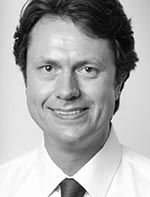 James Invest is a partner in full-time private practice in Harley Street, London. He is a part-time Honorary Clinical Lecturer at the Eastman Dental Hospital, UCL. James Invest is a partner in full-time private practice in Harley Street, London. He is a part-time Honorary Clinical Lecturer at the Eastman Dental Hospital, UCL.
He qualified from Guy’s Dental Hospital in 1995 with a distinction in restorative dentistry, attainted FDSRCS (Eng) in 1999 and completed specialist training in Prosthodontics in 2004 from the Eastman Dental Hosptial, London and was awarded the UCL Dental School Commemorative Prize in Fixed and Removable Prosthodontics.
He teaches prosthodontic and implant dentistry to postgraduate students, and lectures nationally.
Qualifications: BDS (Lond) FDSRCS (Eng) MClinDent (Prosth) MRDRCS (Eng) Specialist in Prosthodontics |
| 14:05 to 14:25 |
Treatment planning considerations for fully edentulous maxilla The purpose of this presentation is to provide a comprehensive overview of the treatment planning options for the completely edentate maxilla. There will be a discussion of the range of treatment planning considerations to successfully plan and manage the spectrum of completely edentulous patients.
Through a thorough review of the current literature on the outcomes of treatment, an evidence-based approach to clinical decision-making in the planning of treatment will be presented together with case-based decision-making. The rationale for fixed versus removable treatment will be presented and the advantages and disadvantages of each modality outlined in detail.
Rishi Patel 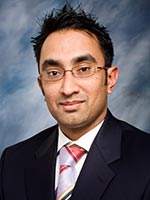 Rishi Patel graduated from the University of Bristol Dental School in 2002. Following a year in general practice, he completed Senior House Officer posts in Oral and Maxillofacial Surgery and Restorative Dentistry at St. George’s Hospital in London and the University of Birmingham Children’s Hospital. Rishi Patel graduated from the University of Bristol Dental School in 2002. Following a year in general practice, he completed Senior House Officer posts in Oral and Maxillofacial Surgery and Restorative Dentistry at St. George’s Hospital in London and the University of Birmingham Children’s Hospital.
Following this, he undertook his graduate Prosthodontic training at Loma Linda University School of Dentistry in California. He completed a 3 year full-time training program focusing on all aspects of fixed, removable and implant prosthodontics and obtained a Master of Science (MS) degree in Prosthodontics in 2008. He then completed a one year Surgical Fellowship in Implant Dentistry at Loma Linda.
Rishi is recognised as a Specialist in Prosthodontics by the General Dental Council. His practice interests are focused on aesthetic, prosthodontic and implant dentistry. He is an Honorary Clinical Teaching Fellow at the University College London, Eastman Dental Institute and is actively involved in teaching postgraduate students and general dentists and pursuing ongoing research interests.
Qualifications: BDS MFDSRCS (Eng) MS (Loma Linda, Calif) |
| 14:25 to 14:45 |
Tall tales and short implants With over 25 years of experience placing and restoring dental implants, I reckon that over 90% of projects go well, stay well and everyone stays happy. What happens when things don't go well and why? Can upset be predicted? Can upset be avoided even in the midst of failure?
Cases good and bad from my files. Protocols for planning. Degrees of complexity. Thoughts on maintenance principles. Expect the unexpected.
Geoffrey Pullen 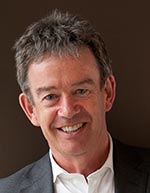 Geoffrey Pullen trained at King’s College Hospital and the University of Southern California School of Dentistry. Geoff has lived and practiced in Central London since 1981. Geoffrey Pullen trained at King’s College Hospital and the University of Southern California School of Dentistry. Geoff has lived and practiced in Central London since 1981.
He has lectured on the use of dental implants and treatment planning to dentists in the UK, Europe, Russia, the US and India. He has demonstrated both the restorative and surgical phase of dental implants to hundreds of dentists in his practice.
He is a member of the Association of Dental Implantology, the American Dental Society of Europe and is a Past President of the American Dental Society of London. He is on the board of the James Hull/Smiles Group and is a director of Bicon Marketing Limited.
Qualifications: BDS (Lond) DDS (U Southern California)
|
| 14:45 to 15:15 |
Panel Discussion
Forum A - Panel 4
|
| 15:15 to 15:30 |
Tea/Coffee & Exhibition
|
| 15:30 to 15:50 |
The treatment of atrophic maxilla: a challenging situation The treatment of atrophic maxilla is a great challenge for the dentist today. The alveolar bone width is often lost, which complicates implant placement. Furthermore, the biggest challenge arises when insufficient alveolar bone is present: neither in width nor in height.
It is often found that full arch grafting procedures lower, the quality of life of our patients. If we could deliver quicker techniques, with immediate loading, wouldn’t it improve the quality of life and overall health of our patients? We can now give graftless techniques, with low morbidity and treatment times; but how?......by using zygomatic implants.
What are the greatest problems of graftless techniques in athropic maxilla cases? Can we do them under sedation? What about under just local anaesthetic? Do we use general anaesthetic to control the patient’s behaviour or is it pain related? Are there other techniques? What about prosthetic problems? What about load?
Manuel Nunez 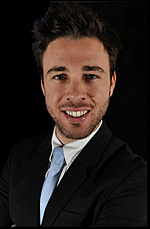 Manuel Nunez qualified from Madrid School of Dentistry in 2005. He has been involved in implant dentistry since 2005. He has done postgraduate studies in Cuba, Spain and Brazil. He is dedicated to mentoring in dental implants, sedation and dental photography. He has a passion for rehabilitating atrophic maxilla implant cases under sedation or general anaesthetic. Manuel Nunez qualified from Madrid School of Dentistry in 2005. He has been involved in implant dentistry since 2005. He has done postgraduate studies in Cuba, Spain and Brazil. He is dedicated to mentoring in dental implants, sedation and dental photography. He has a passion for rehabilitating atrophic maxilla implant cases under sedation or general anaesthetic.
Qualifications: BDS DipHyp |
| 15:50 to 16:10 |
Nutritional manipulation of pro-inflammatory gene expression and the prevention of peri-implantitis Risk factors, most prominently smoking, diabetes and previous periodontal disease, are associated with the development of peri-implantitis and implant failure. Recent study demonstrates that specific genetic markers have been associated with increased expression of IL-1 and are a strong indicator of susceptibility to chronic inflammation and periodontal breakdown in adults.
Treating peri-implant diseases successfully lies in facilitating the resolution of chronic inflammation. The discovery of a new family of pro resolving lipid mediators termed resolvins has shown resolution to involve active biochemical pathways that enable inflamed tissues to return to homeostasis. These newly discovered mediators are biosynthesised from polyunsaturated fatty acids (n-3 PUFA’s) derived exclusively from the diet.
Evidence of genetic and nutritional biomechanisms in inflammation with relevance to the oral tissues is becoming clear with current research demonstrating a role for nutrition in the modulation of inflammation.
This presentation will consider the prevalence of the hyper-inflammatory genome IL1 in the population and the concept of epigenetics, review the biochemistry of nutrition and chronic inflammation of the periodontal tissues, examine new research surrounding dietary factors implicated in the resolution of chronic inflammation and ask the question:
Can we begin to draw together nutritional protocols to support the compromised implant patient?
Juliette Reeves 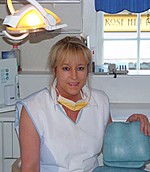 Juliette Reeves is a dental hygienist and trained nutritionist with over thirty years’ experience. She qualified from Birmingham University School of Dental Hygiene in 1981 and the Institute for Optimum Nutrition in 1993. She is Secretary to the BSDHT Eastern Regional Group, clinical director of Perio-Nutrition and a consultant for the Wrigley Oral Healthcare Program. She has written and lectured internationally over the last ten years on the systemic associations between nutrition and oral health and is an editorial advisor to a number of dental journals. Juliette Reeves is a dental hygienist and trained nutritionist with over thirty years’ experience. She qualified from Birmingham University School of Dental Hygiene in 1981 and the Institute for Optimum Nutrition in 1993. She is Secretary to the BSDHT Eastern Regional Group, clinical director of Perio-Nutrition and a consultant for the Wrigley Oral Healthcare Program. She has written and lectured internationally over the last ten years on the systemic associations between nutrition and oral health and is an editorial advisor to a number of dental journals.
Juliette is an active ADI Member and Certified ADIA Implant Auxiliary, receiving training in implant maintenance and therapy from academies in Geneva, Liechtenstein and the USA. She regularly provides postgraduate courses in the UK and was recently elected ADI DCP Committee Member.
Qualifications: EDH dip NMed
|
| 16:10 to 16:30 |
Do we need to develop a soft-tissue bio-type assessment tool? Introduction and background: The importance of soft tissue or gingival biotype in implant dentistry is well documented in the literature, although various methods exist to determine soft tissue biotype; each has a different documented reliability. What is the gold standard for assessment? And do we need to research a reliable tool? A literature review has been conducted to explore the topics of the importance of gingival biotype and the methods of assessment of gingival biotype and its recorded reliability, in addition to a dentist based survey of the dentist perceived view of the importance of gingival biotype and the adopted method of assessment used.
Methodology and study design: Data collection is through an electronic online questionnaire, where we are gathering basic and detailed information about whether gingival biotype is assessed and for what reason it would be assessed, the method of assessment and the classification used also. The questionnaire also asks the clinician to indicate how important this assessment is with regards to implant therapy. This questionnaire has been posted at an online website engine. Results are collected and compared to the existing literature and conclusions are drawn and recommendations follow.
Learning ObjectivesAims: To improve the outcomes of implant therapy by dentists who provide implant therapy.
Objectives: To compare the survey responses of the currently adopted methods of assessing gingival biotype with the documented literature.
M Tareq Ahmado 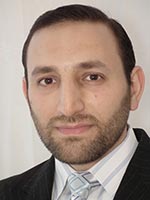 Tareq Ahmado qualified with honours from Hama Dental School, Syria in 2000 and has over ten years of UK experience in Oral and Maxillofacial Surgery. He is a Speciality Doctor in Oral Surgery at St Helens and Knowsley NHS Trust, and along with this has run the referral Implant service the Implant and Graft Portal since 2011. Tareq Ahmado qualified with honours from Hama Dental School, Syria in 2000 and has over ten years of UK experience in Oral and Maxillofacial Surgery. He is a Speciality Doctor in Oral Surgery at St Helens and Knowsley NHS Trust, and along with this has run the referral Implant service the Implant and Graft Portal since 2011.
He has been a Member of the Royal College of Surgeons of England since 2006 and has gained his advanced implantology skills throughout his training and teaching career with a range of courses in the UK and Sweden. He has also taken the further step and engaged himself in an MSc in implantology in Manchester in addition to his Diploma in Oral and Maxillofacial Surgery gained in 2002. He recently obtained a PG Diploma in Clinical Education.
Qualifications: MFDS RCS ENG LDS SE LON
Qualifications: MFDS RCS ENG LDS SE LON |
| 16:30 to 17:00 |
Panel Discussion
Forum B - Panel 3
|
| 17:00 |
Close of Forum
|